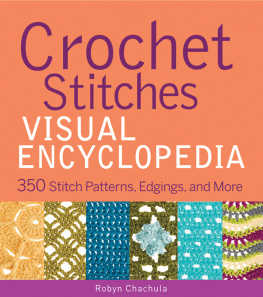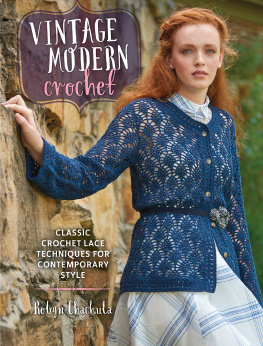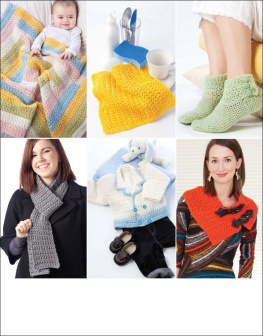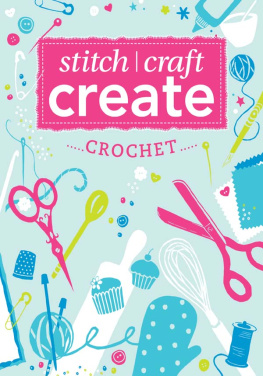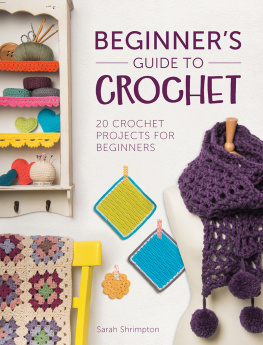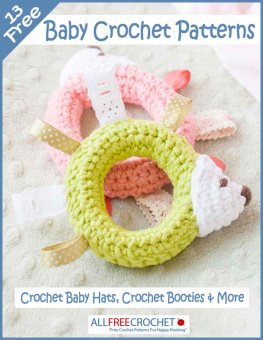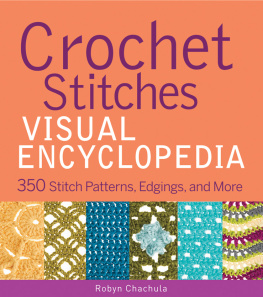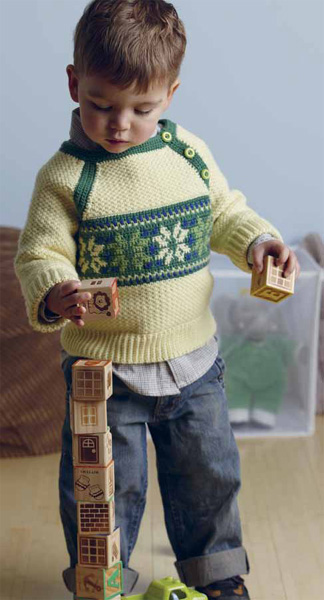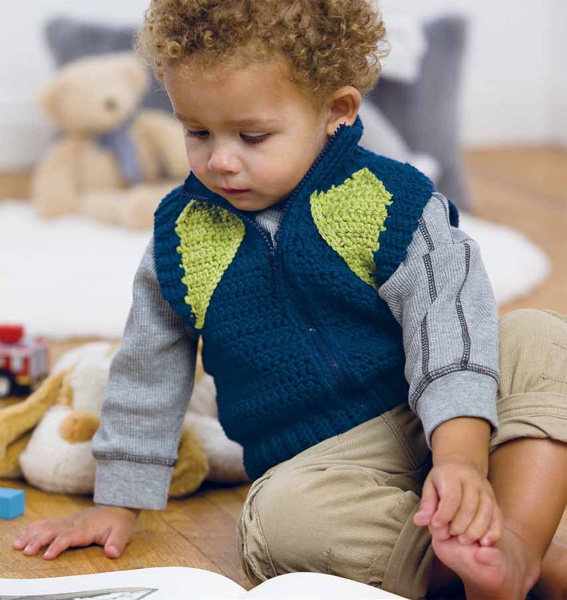Acknowledgments
I had numerous talented and crafty crocheters help me make a number of the samples for the book. They are Rebecca DeSensi, Virginia Boundy, Chie OBriant, Diane Halpern, and Megan Granholm. Without their help I would not have slept for six months, so bless you for all your wonderful work.
The yarns used in the book were all donated graciously by the yarn companies. They are Blue Sky Alpacas, Classic Elite Yarns, Tahki Stacy Charles, Lion Brand, Caron International, and Coats and Clark. Thank you so much for all your support and quick response to all my requests; I truly appreciate all that you have given me.
Thank you to everyone at Interweave, especially Katrina Loving and Karen Manthey, for making the ramblings of a sleep-deprived new mom sound intelligent.
Most importantly, I would like to thank my friends and family for all their love and support in every crazy challenge I take on. I would especially like to thank my husband, Mark, for his unwavering love. Without his encouragement and help, this book would not have been possible.
Lastly, I want to thank you, the reader. Thank you for enjoying what I love to do so much. Your enthusiasm for crochet is what keeps me energized to share my kooky designs, so thank you very much.

Contents

Tell me, how excited do you get when you find out that a friend or relative is expecting? Now be honest, do you get more excited about seeing the baby or about crocheting for the baby? I dont know whether I could answer that honestly myself! There is just something so fun about crocheting baby projects. I dont know whether it is the small size (youll love how quickly they come together), the bright fun colors, or the cute factor. No matter which element it is for you, youll find it in abundance in the pages of this book.
While writing Blueprint Crochet: Modern Designs for the Visual Crocheter (my first book), I knew I was only giving you a taste of how far symbol crochet can go. Now, with this book, I am combining my love of bright fun baby projects with a bit of symbol crochet education. Because these projects are small in size, they present the perfect opportunity to learn something new or just perfect techniques you already love. If your first attempt is not perfect, Im sure your little cutie wont complain. Besides, practice makes perfect and this book provides many projects that will ease you into symbol crochet and fun techniques. Even if you are already an accomplished crocheter, you will find plenty of challenging projects that will allow you to show off your skills!
Above all, each project was designed to bring a smile to your little pumpkins face as well as to give you tremendous crochet enjoyment. Have fun!
In this book, you will be going on a journey deep into some really fun crochet techniques. There will be some crochet colorwork, crocheting from the neckline down, combining granny squares and stitch patterns, crocheting appliqus to add to projects, sculptural crochet, and Tunisian crochet. You will be aided in all of these techniques by symbol crochet. So, lets begin our journey by mastering all that symbol crochet has to offer.
Symbol Crochet Basics
You will see crochet symbols used throughout this book. They will help you understand the instructions by giving you a visual reference for the crochet stitches and patterns you will be using. They are quite simple to follow once you have mastered the basic concepts, so read on and discover the magic of crochet symbols. I think youll fall in love with them just as I have!
THE SYMBOLS
The key to understanding crochet symbols is that each symbol represents a crochet stitch. I like to think of them as little stick diagrams of the actual stitch. Lets start with the smallest stitch, the chain, by looking at the crochet symbol key at right. The symbol for a chain is an oval. Why an oval? Well, think about making a chain stitch; its a simple loop pulled through another loop. That loop, which is our chain stitch, looks a lot like an oval, doesnt it? The international crochet symbols try to mimic the actual stitch as much as possible.
Lets look at a few more; youll soon see that reading crochet symbols becomes quite intuitive. Appearing next in the stitch key is the slip stitch, which is a filled dotthe symbol is small, almost invisible, just like the stitch. Moving on, the single crochet is a squat cross, again just like the stitch. The half double crochet is slightly taller than the single crochet. The double crochet is taller than the half double and has an extra cross in its middle. From the double crochet up, the little crosses tell you how many yarnovers you have before you insert your hook. Go ahead; make a double crochet. Now, look at your stitch. Do you see the little horizontal line in the middle of the stitch? That is why the double crochet symbol has that little bar in the middle of its post. The rest of the symbols fall in line with the same reasoning. If the stitch is short, the symbol will be short; if the stitch puffs out (like a cluster stitch), the symbol will as well.


